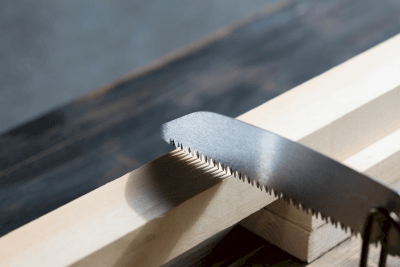What Is a Saber Saw Blade?
 A saber saw, also known as a reciprocating saw, is an electric tool equipped with a saber saw blade.
A saber saw, also known as a reciprocating saw, is an electric tool equipped with a saber saw blade.
Being electric, saber saws are ideal for prolonged cutting tasks as they reduce hand fatigue. Saber saw blades, made of various materials like steel and carbon, can cut through hard materials including iron and wood.
Orbital saber saw blades add an elliptical motion to the standard reciprocating movement, enhancing cutting power.
Uses of Saber Saw Blades
Saber saw blades are replacement blades for saber saws. Therefore, select the blade that best suits the required use of your saber saw.
While cutting soft materials such as wood or polyvinyl chloride piping does not require special consideration, hard materials like stainless steel pipe demand specific blades. Using a wood blade for stainless steel will quickly render the blade ineffective.
The saber saw blades are long and narrow, enabling access to tight spaces, and being electrically operated, they simplify the cutting process.
Principle of Saber Saw Blades
In addition to the material, other important factors in saber saw blades include the number and size of blades, blade thickness, and length.
The number of blades in a saber saw blade is also related to the size of each blade. The smaller the number of blades, the larger the size of each blade. Using a saber saw blade with a large blade increases the speed of cutting. However, the disadvantage is that the large blade makes the cut surface rough. On the other hand, if the blade has a small blade, the cutting speed will be slow, but the cut surface will be clean.
Thick blades are more suitable for cutting hard materials since they are stronger than thin ones. On the other hand, thicker blades produce a messy cutting surface and more cutting debris. If the blade is thin, the cut surface will be clean, but the blade will bend and break easily.
Longer blades can cut larger objects while shorter blades are easier to use when considering workability. Therefore, it is important to select the blade that best suits the application.
Saber Saw Blades
The cutting capacity of saber saw blades is determined by the material, thickness, and thickness of the object to be cut. Generally, it may be written as “maximum cutting dimension”. Most manufacturers use the φ notation (diameter dimension) as the cuttable size, and the numerical value expresses the cuttable size for cylindrical materials such as pipes. It is desirable to select the model based on this numerical value.
In addition, additional functions of the saber saw blade to compensate for its cutting ability include, a low vibration mechanism that can be expected to reduce body fatigue by suppressing vibration, a dustproof and drip-proof specification that is resistant to rainwater and dust, and cutting by jerking action.
The dust-proof and drip-proof design is resistant to dust and rainwater and can be used outdoors in the rain or at dusty work sites without concern.
The low-vibration mechanism reduces vibration by counterbalancing. It has a function called the orbital mechanism that increases the cutting speed by increasing the blade’s bite into the material by adding a crouching motion to the blade movement. While the cutting speed is faster, it also has the disadvantage of making the cutting surface rough and prone to burrs.
There are various factors related to the cutting ability of saber saw blades:
- Material to be cut
The ability varies depending on the material, such as steel, spiral duct, stainless steel, wood, cast iron, ALC, etc. - Number of peaks (number of blades)
The higher the number of saber saw blade blades, the closer the cut surface is to burr-free, but the lower the cutting speed. Conversely, the fewer the number of blades, the faster the cutting speed, but burrs will occur on the cut surface. - Blade length
Each manufacturer offers blade lengths from 150 mm to 300 mm. While a longer blade length provides a wider cutting surface, it also causes more vibration to the machine body, so it is necessary to hold the machine body firmly in place. If ease of handling is a consideration, shorter blades are easier to work with. - Blade thickness
A thin blade produces less cutting debris and a clean finish, but if the material is hard and thick, a thicker blade is necessary.
How to Use Saber Saw Blades
- Speed adjustment: Turn the dial with the trigger pulled to adjust the speed.
- Fixing the saber saw blade to the material: Place the saber saw blade on the target area to be cut.
- Cutting: Pull the trigger to start cutting. Hold the blade firmly in your hand so that it does not move from the cutting point.
(If the blade is at an angle, it may break, which is dangerous.)